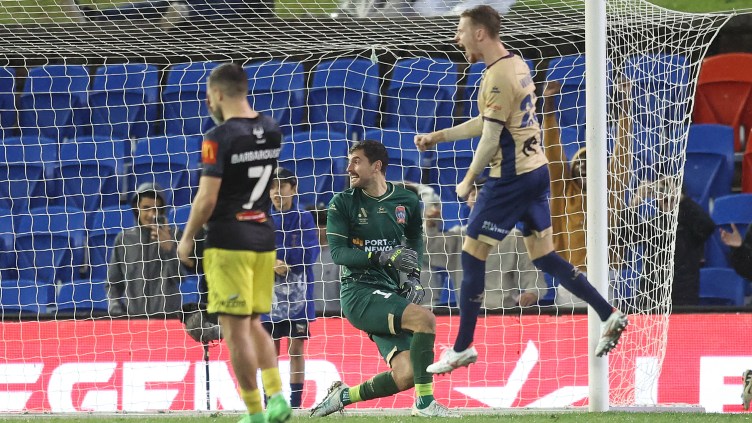It’s that time of year again when Australian clubs start to get enquiries from Asian clubs regarding their players.
It-s that time of year again when Australian clubs start to get enquiries from Asian clubs regarding their players.
With the January window opening in Asia (the major window for recruitment in Korea, China and Japan), we have already seen Matt Simon depart the Mariners for a presumably lucrative contract with Korean giants, Chunnam Dragons, where he will join up with his fellow Aussie and former Olyroo team-mate, Robbie Cornthwaite.
Past transfers have seen Sasa Ognenovski, Iain Fyfe, Joel Griffiths, Alex Brosque and others depart the A-League for Asian shores.
Is it a bad thing? I don-t think so. Our move to the Asian Football Confederation (AFC) has had many benefits, including a greatly increased quality of opposition for continental club competitions in the Asian Champions League (ACL), as well as a genuinely interesting national team competition in the form of the Asian Cup.
The move to the AFC has also benefited our domestic players as the 3+1 rule which is available to Asian clubs has seen Australian players become prized targets. Not only because their profile has increased due to their clubs involvement in the ACL or the national team-s success in the Asian Cup (though this has been an important factor), but also because the Australian players offer something very different to the type of player normally associated with most Asian players who tend to be small, fast, technical players.
Strong, tall central defenders such as Ognenovski and Cornthwaite, as well as powerful No.9-s such as Griffiths and Simon are attractive options for Asian teams to use their +1 spot on. Australian players are known for their strong mentality, work-rate and ability to adapt, in stark contrast to many of their more temperamental South American counterparts.
No doubt some observers and fans of the A-League will wring their hands at what they see as the talent drain from our shores, but I think this is a short-sighted reaction.
We will always be a feeder league to richer football nations. We are certainly not alone in this regard, and there are many football nations with longer histories in the game than us such as Belgium, Switzerland, Austria and the Scandinavian nations who have made an art of developing domestic talent and farming it out for a profit.
We are all very aware of the financial challenges facing the A-League clubs. Until the next round of television coverage is finalised and the stadium deals are improved, clubs need to become better at tapping into other revenue streams, and player sales is an obvious one.
The money generated from these sales (or loan fees, as the case may be) cannot only be used to pay the wages of the players and staff that remain at the club, hopefully in the future the money can also be poured back into club academies, training facilities and other key infrastructure which can only be beneficial for the game.
With many of the Australian players in the A-League not necessarily possessing the profile or appropriate passport for the much-coveted European move, Asia presents a real opportunity for players who may well have not had the opportunity to test themselves overseas in big arenas in previous times to go over to Korea and China and experience the often fanatical atmospheres that surround the game in these countries.
It also gives a chance for those players on the wrong side of 25 to make strong career move, whereas previously they would-ve been resigned to a domestic league future as it is very rare for an older player to make the move to a strong European team.
Would Sasa Ognenovski at 29 been an attractive target for a European club, regardless of his stellar A-League form? No, but he took his new-found opportunity in Korea with Seongnam Ilhwa with both hands to become AFC Player of the Year in 2010.
It must be a positive thing too for our national team when competing against Asian nations in World or Asian Cup qualification matches to have players with experience of the very different playing conditions experienced in south-east Asia in particular.
Another reason why Asian clubs may become increasingly important to the economics of football in this country is the flat nature of the European market.
The negative impact of the GFC on many of the traditional footballing markets in Europe means it will be harder than ever in the short term for European clubs to buy our top players, as the market is flooded with free agents and previously unattainable players become more freely available. Clubs take a much more cautious approach to purchasing what they see as experimental or unproven young players from lesser known exporters of footballers such as Australia.
Maybe Asia is the new Europe for Australian footballers, in the short-term, anyway.
Rather than roll our eyes to the heavens and bemoan the loss of our exported players to the A-League, we should be thankful for the Asian investment in our players – it may actually be keeping the wolves from the door for the next few years.



